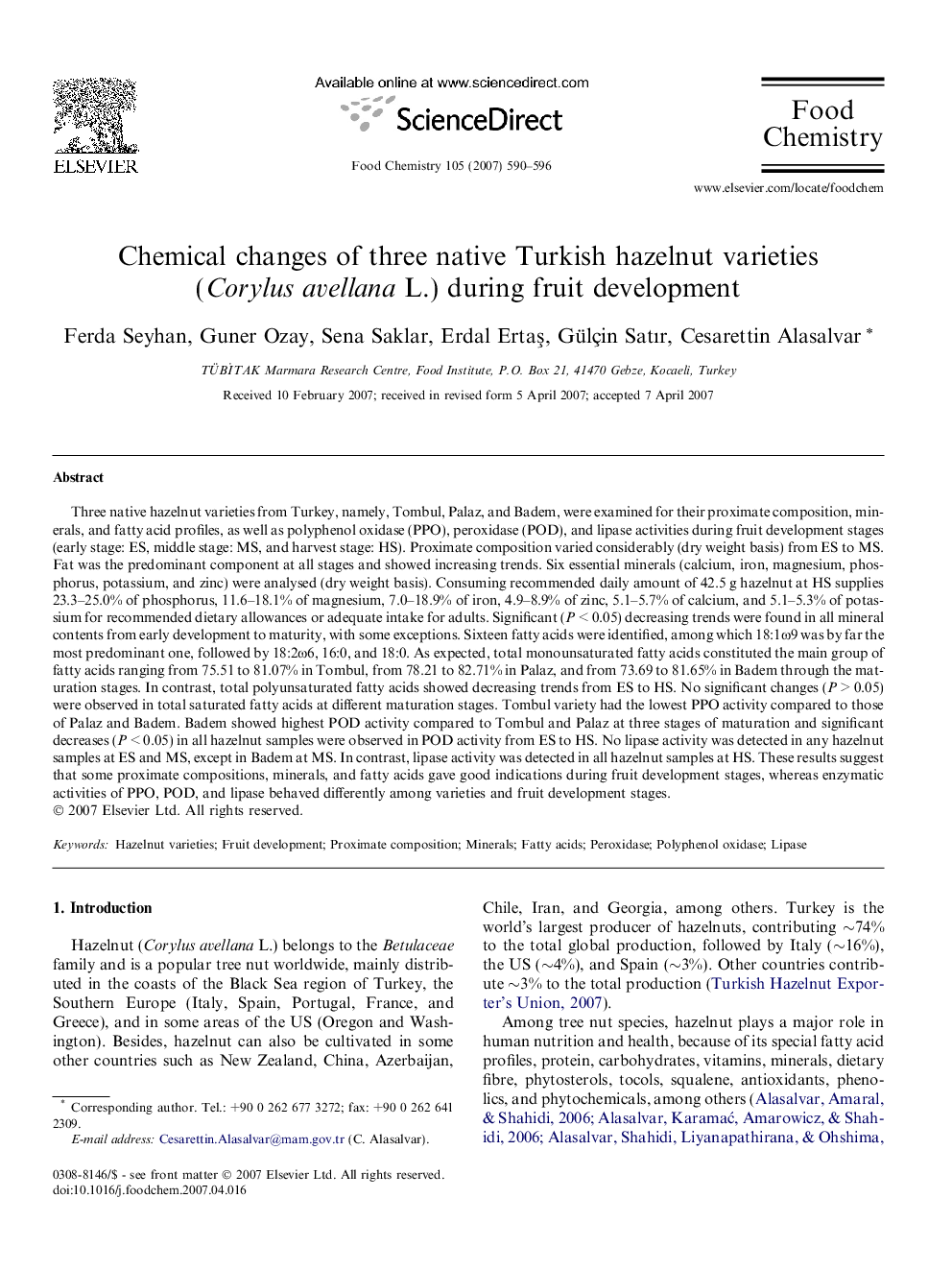| Article ID | Journal | Published Year | Pages | File Type |
|---|---|---|---|---|
| 1189524 | Food Chemistry | 2007 | 7 Pages |
Three native hazelnut varieties from Turkey, namely, Tombul, Palaz, and Badem, were examined for their proximate composition, minerals, and fatty acid profiles, as well as polyphenol oxidase (PPO), peroxidase (POD), and lipase activities during fruit development stages (early stage: ES, middle stage: MS, and harvest stage: HS). Proximate composition varied considerably (dry weight basis) from ES to MS. Fat was the predominant component at all stages and showed increasing trends. Six essential minerals (calcium, iron, magnesium, phosphorus, potassium, and zinc) were analysed (dry weight basis). Consuming recommended daily amount of 42.5 g hazelnut at HS supplies 23.3–25.0% of phosphorus, 11.6–18.1% of magnesium, 7.0–18.9% of iron, 4.9–8.9% of zinc, 5.1–5.7% of calcium, and 5.1–5.3% of potassium for recommended dietary allowances or adequate intake for adults. Significant (P < 0.05) decreasing trends were found in all mineral contents from early development to maturity, with some exceptions. Sixteen fatty acids were identified, among which 18:1ω9 was by far the most predominant one, followed by 18:2ω6, 16:0, and 18:0. As expected, total monounsaturated fatty acids constituted the main group of fatty acids ranging from 75.51 to 81.07% in Tombul, from 78.21 to 82.71% in Palaz, and from 73.69 to 81.65% in Badem through the maturation stages. In contrast, total polyunsaturated fatty acids showed decreasing trends from ES to HS. No significant changes (P > 0.05) were observed in total saturated fatty acids at different maturation stages. Tombul variety had the lowest PPO activity compared to those of Palaz and Badem. Badem showed highest POD activity compared to Tombul and Palaz at three stages of maturation and significant decreases (P < 0.05) in all hazelnut samples were observed in POD activity from ES to HS. No lipase activity was detected in any hazelnut samples at ES and MS, except in Badem at MS. In contrast, lipase activity was detected in all hazelnut samples at HS. These results suggest that some proximate compositions, minerals, and fatty acids gave good indications during fruit development stages, whereas enzymatic activities of PPO, POD, and lipase behaved differently among varieties and fruit development stages.
